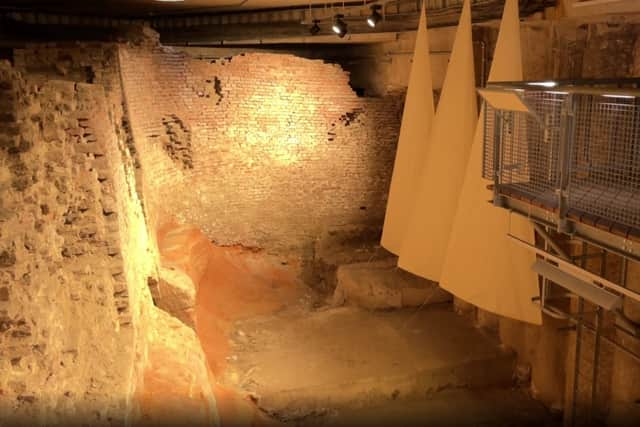Hidden history: The origin of Liverpool’s wealth is buried under Liverpool ONE
and live on Freeview channel 276
The origin of Liverpool's fortune as a city can be found buried underneath Liverpool ONE. Revealed during excavations on the site in 2001, the story of the world's first commercial enclosed wet dock can be explored on the Old Dock Tour.
The construction of the pioneering dock in 1715 was a huge financial risk, but it paid off handsomely, paving the way for many decades of dock expansion on both sides of the River Mersey.
Advertisement
Hide AdAdvertisement
Hide AdIt was one of Liverpool’s greatest contributions to progress in world commerce, including the massive import and export trade as well as the city’s involvement with the grotesque Transatlantic slave trade.
“Before we had a dock system, Liverpool was a very small fishing village, and this engineering feat is basically why we have such a hustling, bustling maritime city,” explains Steph Evans, Tour Guide at National Museums.


Ms Evans told LiverpoolWorld: "What we're standing in here is the worlds first commercially enclosed wet dock. What that means is that it’s a dock for trade and it’s basically where Liverpool gets all of its money and our city grows up around.
“All the streets lead toward this area, and what grows up around it is basically an 18th-century Vegas. So, sailors would come into the port; they'd want to get a drink and a few other things partying around the town."
Advertisement
Hide AdAdvertisement
Hide AdThis hidden gem lets visitors back see a large portion of the Old Dock rising more than 20 feet from the bed of the Pool - the creek that gave Liverpool its name. Tour guides explain how an innovative feat of engineering shaped Liverpool's destiny forever.
Steph continued, "There are so many secrets about Liverpool‘s past and Liverpool‘s history just standing here and talking about the bricks in front of us. It’s such a privilege, especially having heritage from Liverpool, being able to see the reason why people settled here.”
Liverpool and the slave trade
Steph said: "30% of the Merchants Guild at the time the dock was being built were slave traders. The Mayor Richard Gildart was a slave trade, and he was also a plantation owner."
From the early 1700s, Liverpool ships carried about 1.5 million enslaved Africans across the Atlantic on approximately 5000 voyages. By 1795 the city controlled over 60% of the British slave trade.
Advertisement
Hide AdAdvertisement
Hide AdLiverpool is now home to the International Slavery Museum (ISM), situated in the Maritime Museum on the Albert Dock, it stands right next to the dry docks where slave trading ships were repaired and fitted out.
A number of Liverpool streets have had their links with slavery explained for the first time through a series of bronze plaques.
History of the Old Dock
The Old Dock was constructed in 1715 at the mouth of the Pool, which had been at the heart of the town's successes, but with increasing numbers of ships using the port, it was struggling to cope.


In 1708 the merchants who controlled Liverpool Corporation employed Thomas Steers, one of Britain's leading canal engineers, to find a solution.
Advertisement
Hide AdAdvertisement
Hide AdHe converted the mouth of the Pool into a dock with quaysides and a river gate. It was now possible for ships to load and unload whatever the state of the tide - a revolutionary facility.
The dock was technically very difficult to build and cost £12,000, double its original estimate.
As a result, the Corporation was nearly bankrupt, but its success encouraged further increases in overseas trade through Liverpool, shaping and changing the city's fortunes.
Watch the video at the top of the page for our full feature on Liverpool’s Old Dock.
